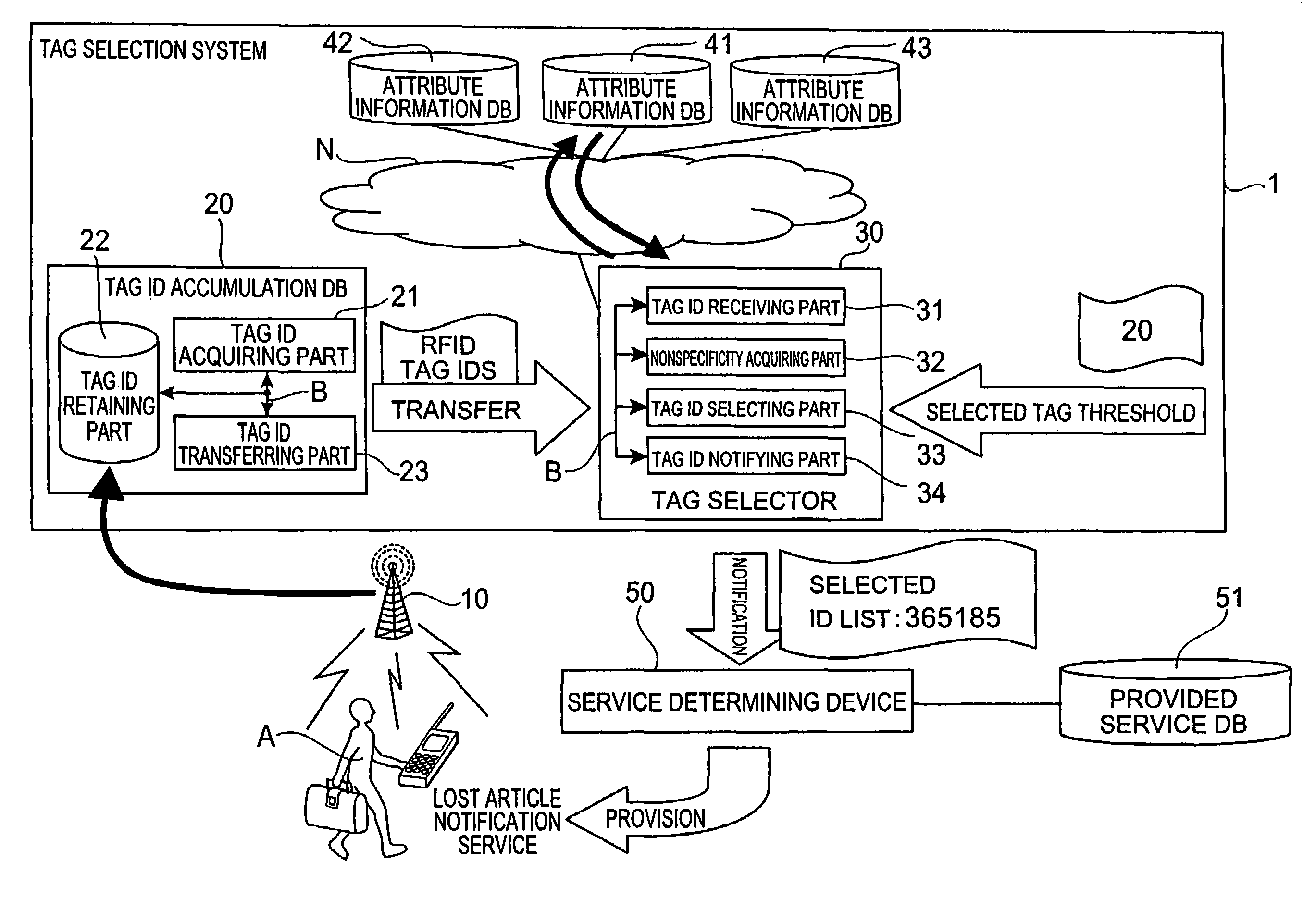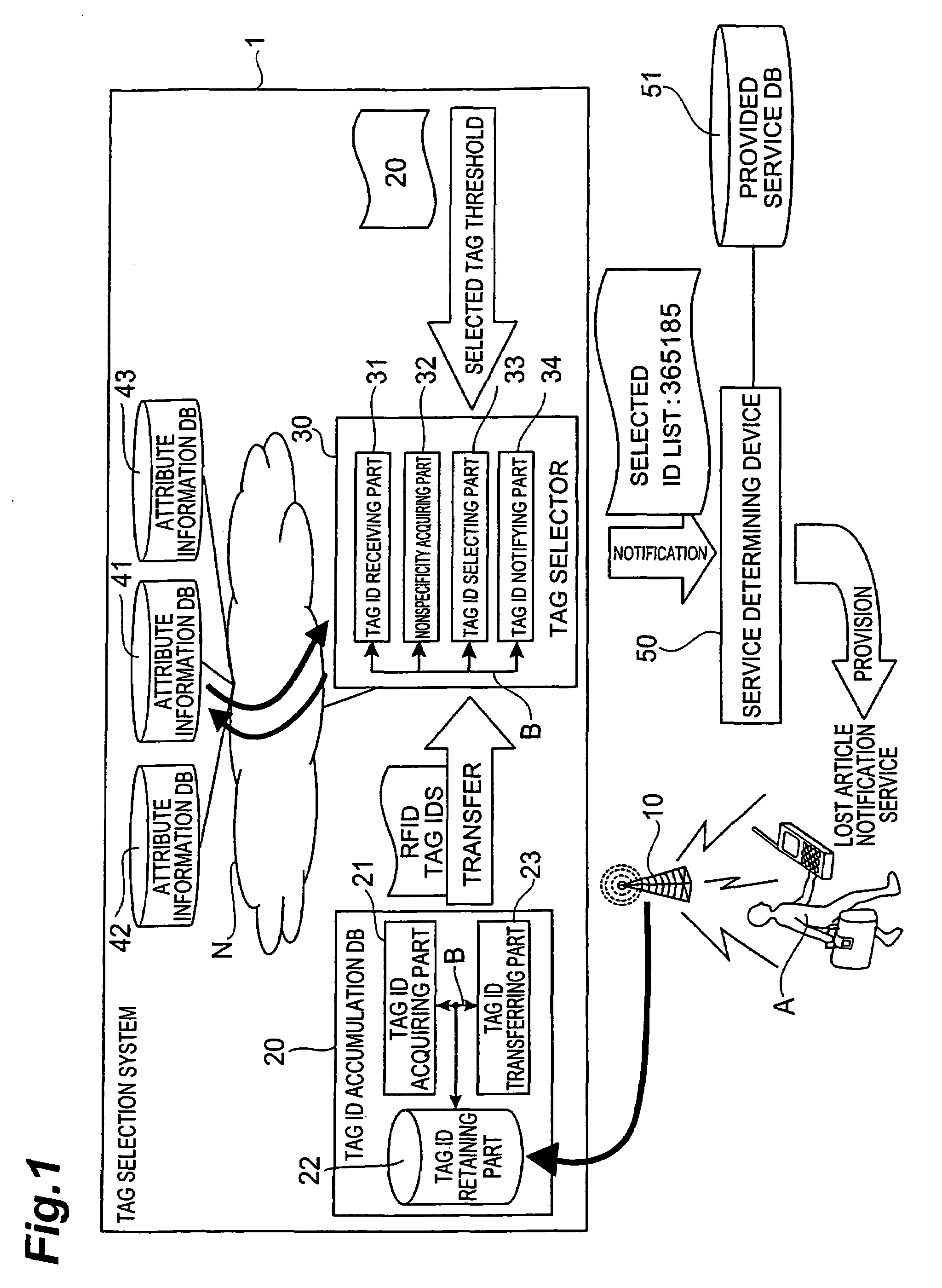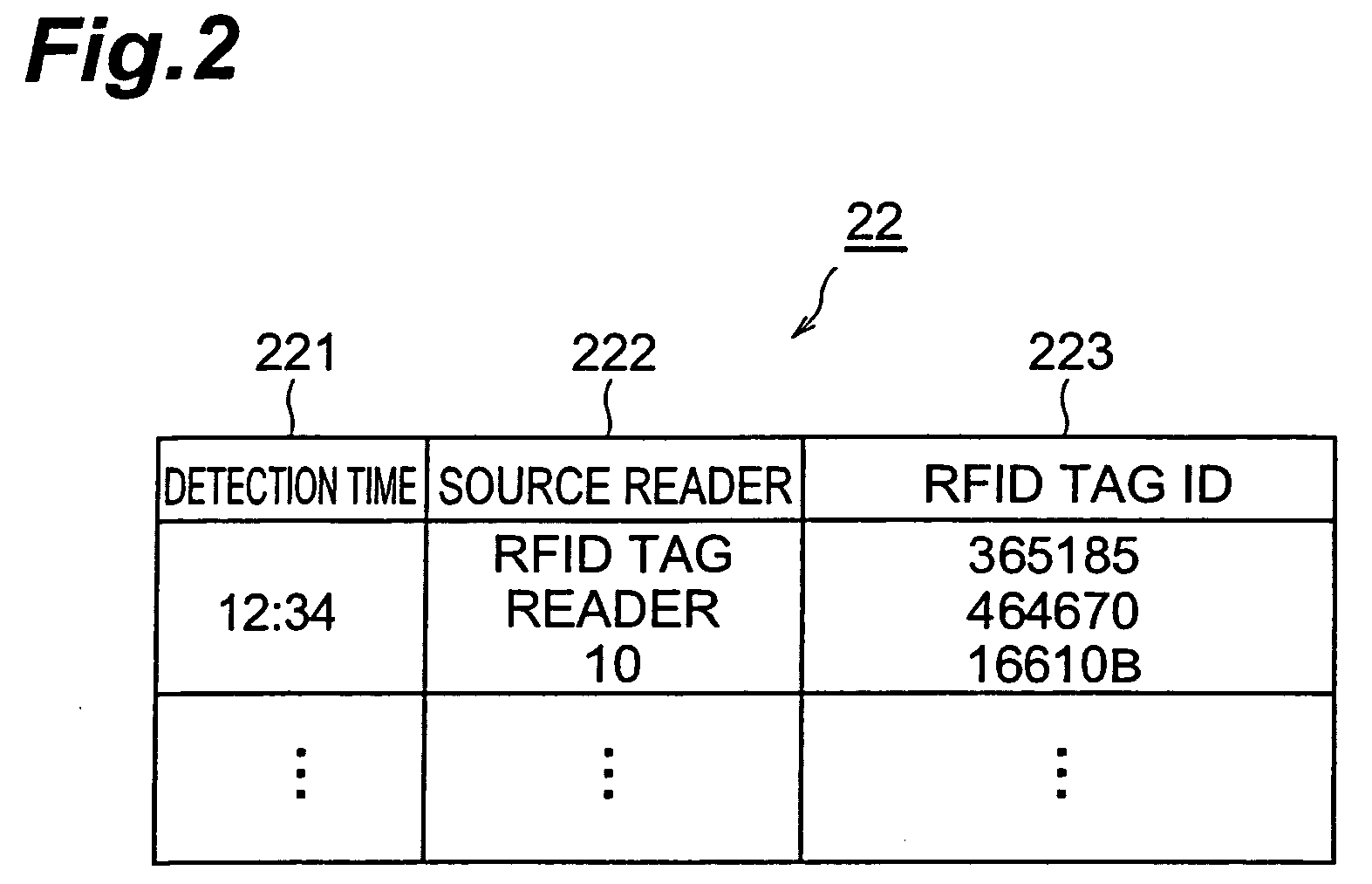Tag selector, tag selection system, and tag selection method
a tag selection and tag selection technology, applied in the field of tag selection system, tag selection method, can solve the problems of large number of rfid tags detected, difficult in practice, and extremely difficult in terms of data storage capacity or processing performance, so as to reduce the non-specificity of rfid tags and widen the versatility of objects
- Summary
- Abstract
- Description
- Claims
- Application Information
AI Technical Summary
Benefits of technology
Problems solved by technology
Method used
Image
Examples
first embodiment
[0034]The first embodiment of the present invention will be described below with reference to the accompanying drawings presented for illustrative purposes only. FIG. 1 is an illustration for explaining a configuration of a tag selection system in the present embodiment. As shown in FIG. 1, the tag selection system 1 is comprised of at least a tag ID accumulation DB (DataBase) 20, a tag selector 30, and attribute information DBs 41, 42, and 43. The tag selector 30 and the attribute information DBs 41, 42, 43 are connected so as to be able to communicate with each other through a network N.
[0035]The tag ID accumulation DB 20 (corresponding to the accumulation device) is functionally comprised of a tag ID acquiring part 21, a tag ID retaining part 22, and a tag ID transferring part 23. These components are connected through a bus B so as to be able to feed and accept signals to and from each other. The tag ID acquiring part 21 acquires IDs of RFID tags detected by an RFID tag reader 1...
second embodiment
[0060]The second embodiment of the present invention will be described with reference to FIGS. 7 to 9. The tag selection system in the second embodiment is different from the first embodiment in that a cache device is provided between the tag selector and the attribute information DBs. Namely, noting that the RFID tag ID can be selected by acquiring only the nonspecificities out of the plurality of attribute information items as described above, the second embodiment is configured to make the cache device retain the correspondence between RFID tag IDs and nonspecificities. This minimizes the number of references for the tag selector to refer to the attribute information DBs as to nonspecificities of identical RFID tag IDs, thereby achieving speedup of processing. The configuration and operation of the system in the present embodiment will be described below.
[0061]FIG. 7 is an illustration showing a configuration of tag selection system 2 in the second embodiment. As shown in FIG. 7,...
PUM
 Login to View More
Login to View More Abstract
Description
Claims
Application Information
 Login to View More
Login to View More - R&D
- Intellectual Property
- Life Sciences
- Materials
- Tech Scout
- Unparalleled Data Quality
- Higher Quality Content
- 60% Fewer Hallucinations
Browse by: Latest US Patents, China's latest patents, Technical Efficacy Thesaurus, Application Domain, Technology Topic, Popular Technical Reports.
© 2025 PatSnap. All rights reserved.Legal|Privacy policy|Modern Slavery Act Transparency Statement|Sitemap|About US| Contact US: help@patsnap.com



